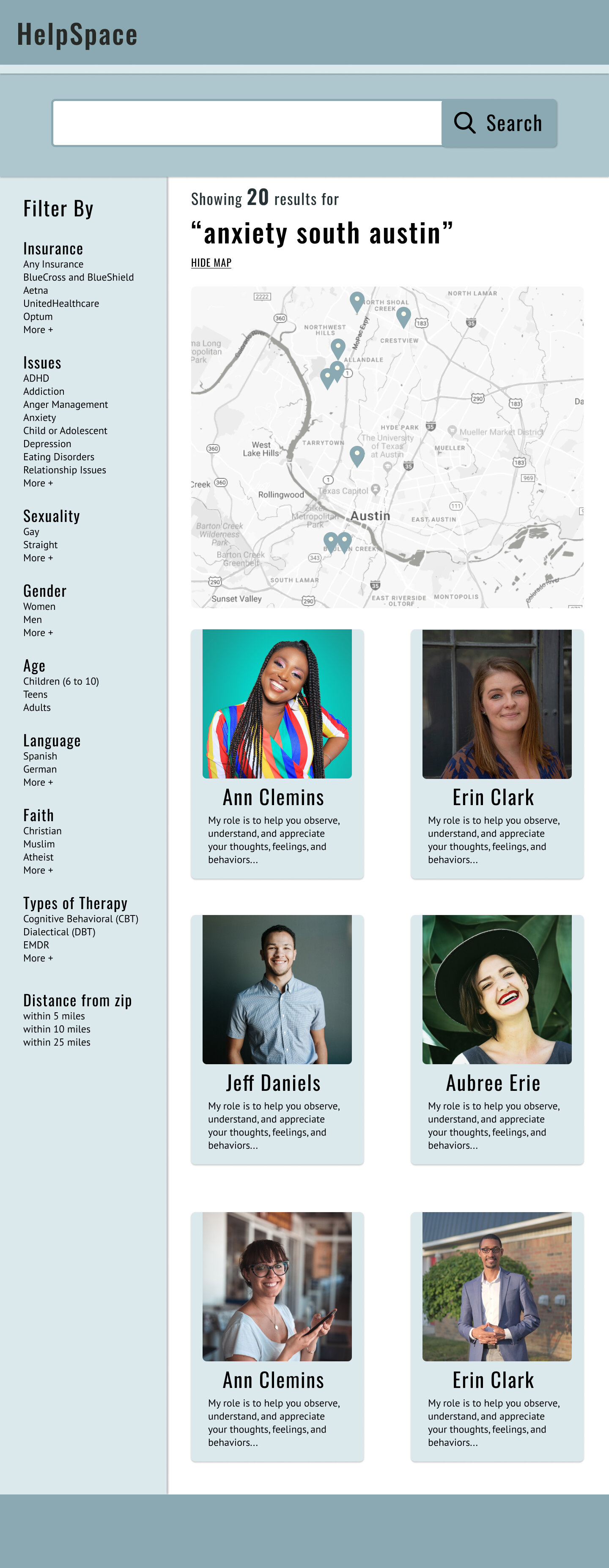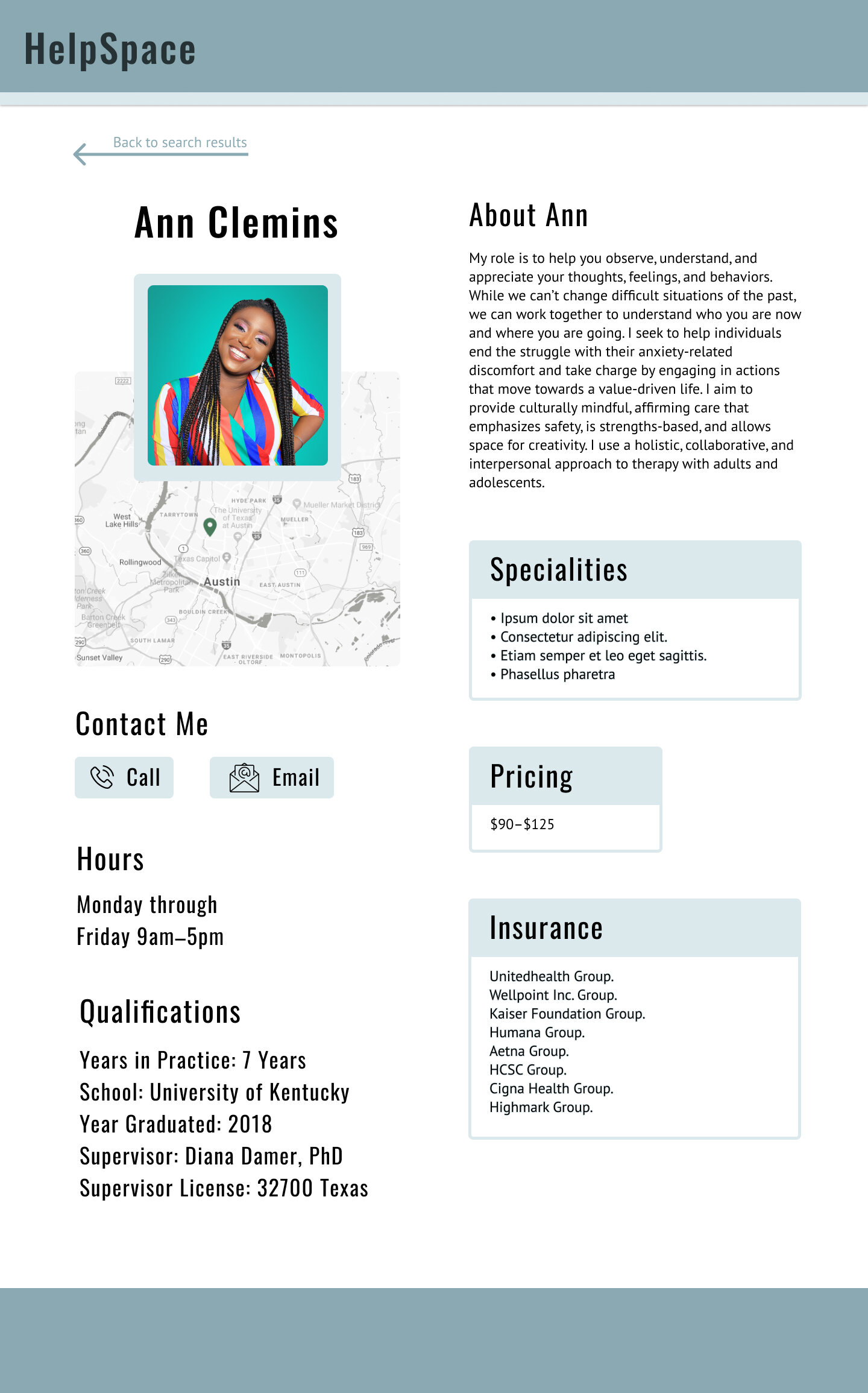
Researching Women's Mental Health
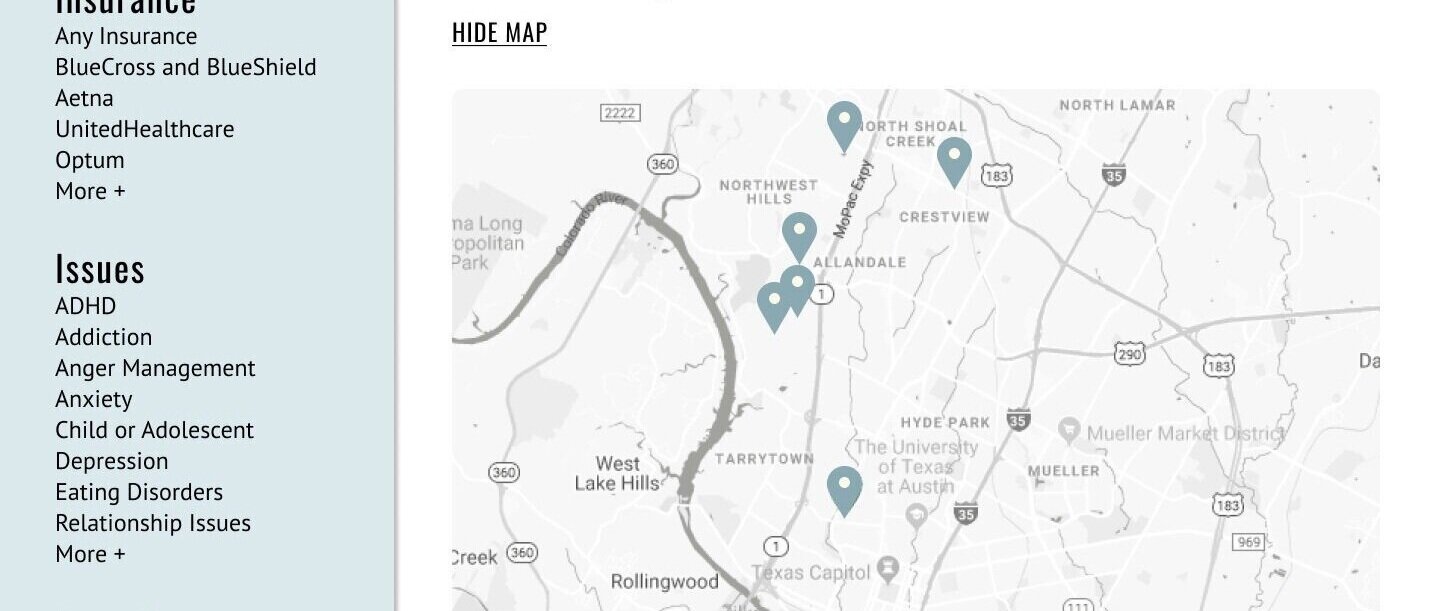
Researching Women's Mental Health
A fellow designer and I were discussing women’s mental health and the barriers we had come across in our self-improvement efforts. She and I wanted to understand the barriers and the entry points that other women found in looking for mental health care.
I researched online statistics about women and mental health and found that 1 in 5 women in the United States suffers from a mental health condition and that women are twice as likely as men to experience PTSD or depression. My friend and I wanted to understand more about the emotional and behavioral experiences women had when they reached out for help, or chose not to, for these mental health conditions. We created a plan for exploratory research focused on women in the US.
User Interviews
We created a screener survey and recruited participants who identified as women or non-binary who had had experience with some type of mental healthcare. We then interviewed eight participants. We asked about their experiences with and feelings towards therapy throughout their life. Participants spoke with us about their parents’ and social circles’ attitude towards therapy and the pivotal moments that made them abandon or attend therapy.

We synthesized the information from our interviews by looking through the interview transcripts we had created for goals, beliefs, feelings, and tasks our participants had in relation to mental health and mental healthcare.

Analysis and Mapping
We then created a mind map of the utterances we had collected; group the sentiments with other similar thoughts. As we did, positive and negative patterns emerged in the responses. We created subgroups within the positive and negative sentiments and looked for relationships between the subgroups.
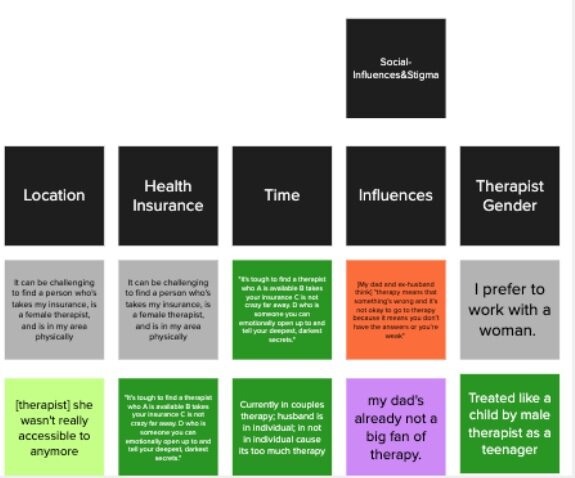
Part of an utterance mind map
I took the groups we had created and find opposing subgroups between the positive and negative utterances. We created a data visualization showing the two sides of mental healthcare. The groups on each side of the valley mirror each other, solutions with problems, motivators with barriers.

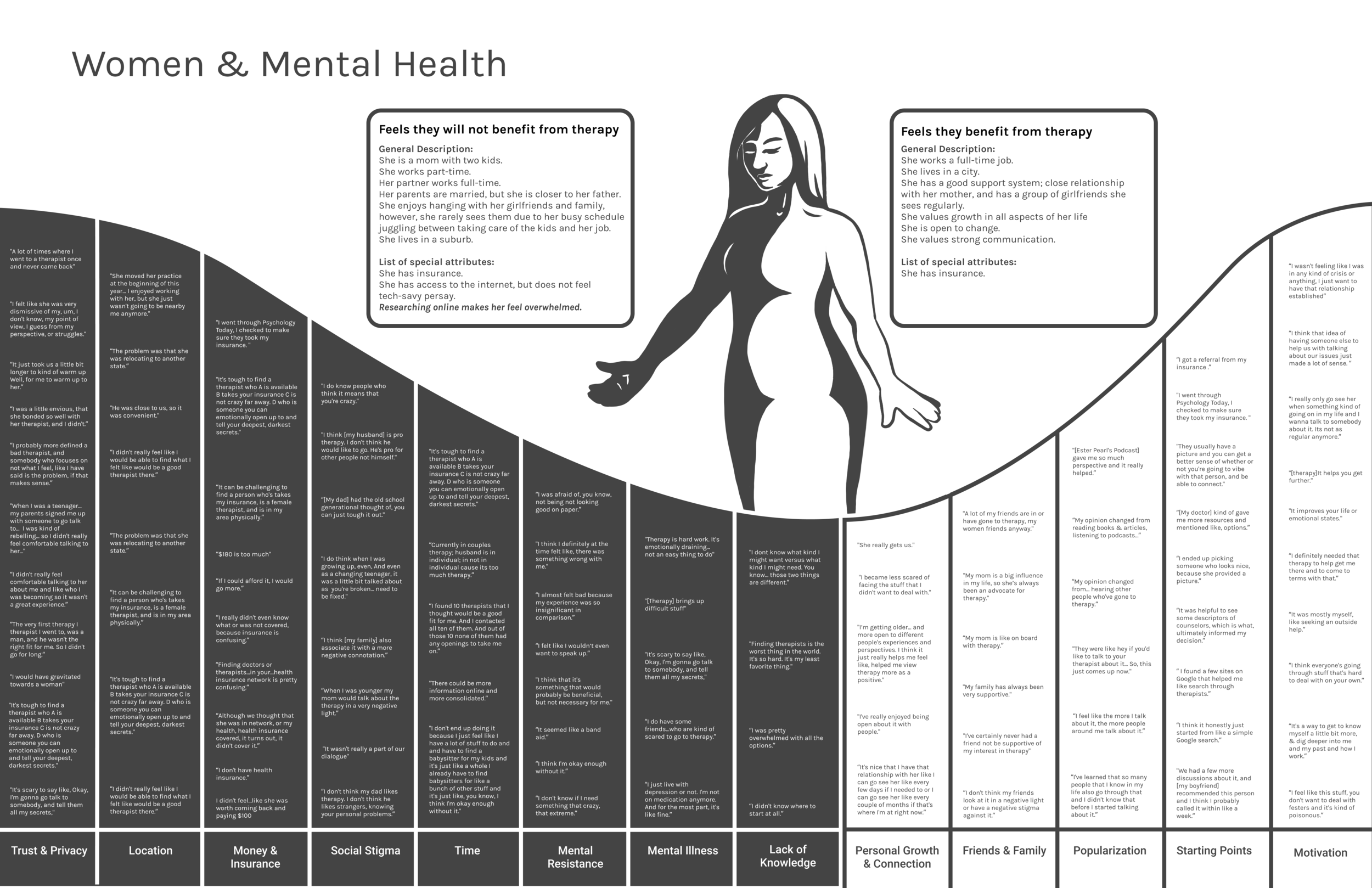
Where to Start
After conducting this research together, I decide to ideate solutions to one of the many problems we had discovered in our research. I focused on the barriers that women have when finding a therapist or mental healthcare provider. A frequent comment we heard during research was that participants didn’t know where to look for a therapist or how to conduct an effective search for something so personal. One participant had recommended using the Psychology Today website to search. I had experience with that website in the past and had been turned off by the overload of information you receive as a first time user. I decided to design a new website, similar to Psychology Today, in that it would allow you to search for therapists at many different offices and in private practices in one place. However, my site would be focused solely on the healthcare search and providing the most vital information about each therapist to users.
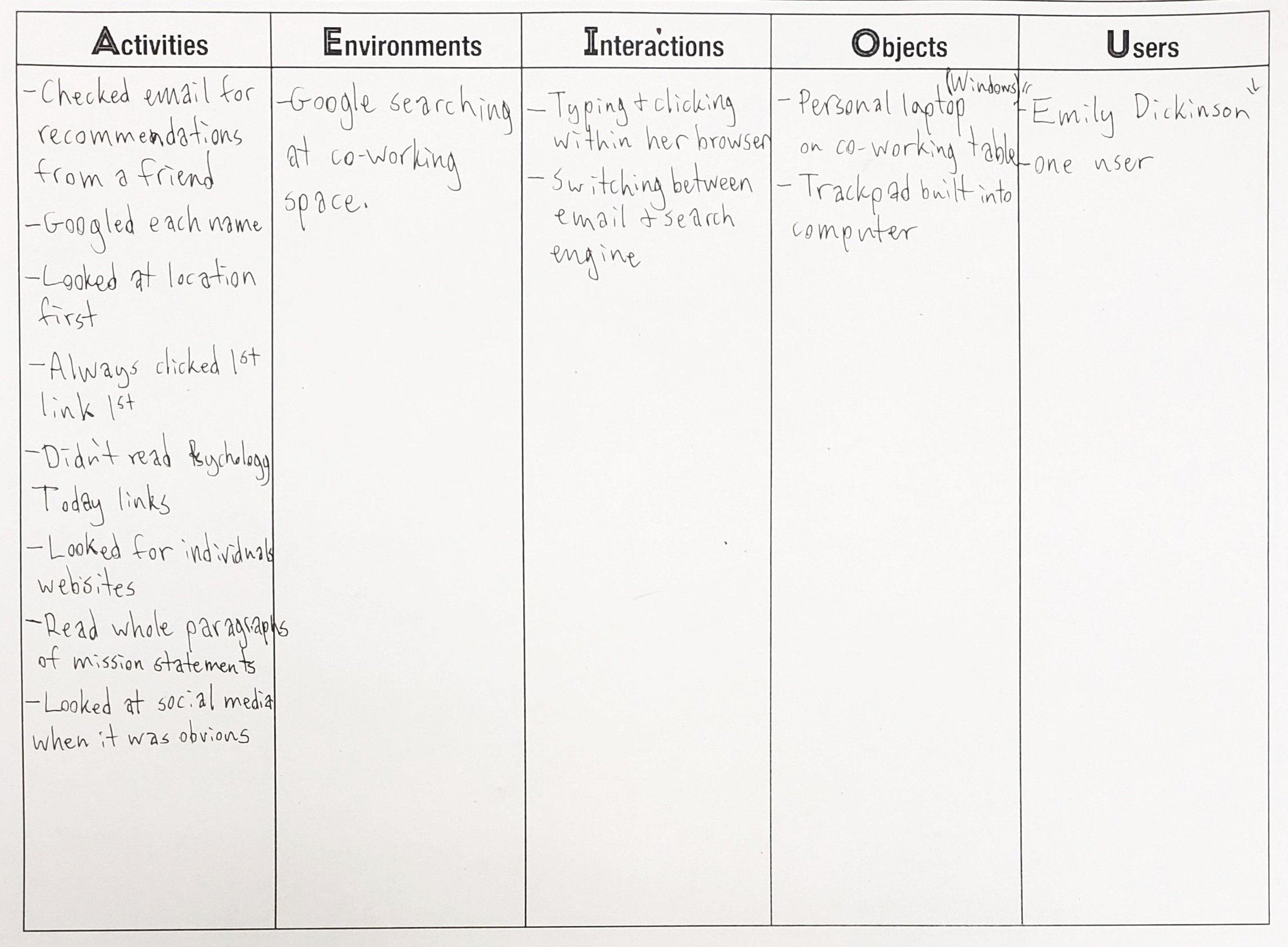
Gathering Requirements
In order to determine what information was most critical to mental healthcare seekers, I turned back to the research. I looked at the groupings of participant comments that we had made that related to finding a therapist. I also conducted a contextual inquiry with one of our interview participants and; observing her as she searched for and called potential therapists.
The users I spoke with wanted to be able to get a feel for who the therapist was and whether they would like them as a person and a provider before they invested in meeting them for an appointment. Many user commented that the process was always hard and would inevitably involve multiple first-appointments with different therapists. This expectation of an arduous process is a huge barrier to entry for most people struggling with their mental health. From my research, I determined that the therapists’ pages would need to include their photo, a personal statement from the therapist, and a phone number to reach them at. Additionally, the site would need descriptions of their services, their location, office hours, their pricing, and insurance options.
Visual Design
I created sketches, wireframes, and mockups of the pages of my new therapy search website. I created a friendly gender-neutral color palette and added design elements to create a welcoming professional tone. I worked to steer clear of the overwhelming or institutional feeling that many healthcare sites have. I also opted for a more contemporary feel in my san-serif open font choices as opposed to the overly emotionally script fonts that some therapy site choose. The final mockups focus on the users’ task at hand within a simple visually pleasing environment.



